Shocking truth about the March for Our Lives Truth on gun Statistics
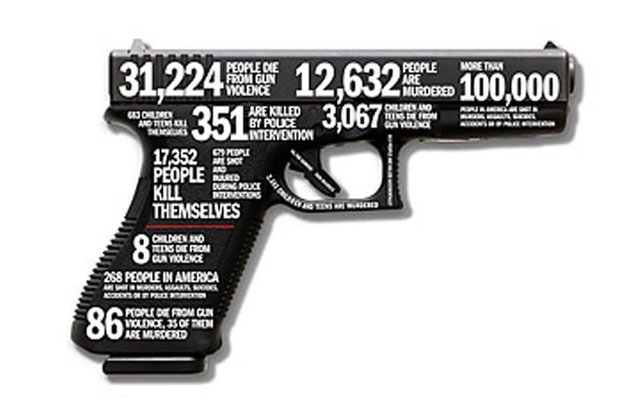
A Guide to Mass Shootings in America
First let’s take a look at the shocking evidence of the teachers illegally organizing the March for Our lives using Their own opinions rather than real facts to anger these children that had just been in a life changing school shooting.
Many of you may say the Parkland school shooting was fake and as much as I would love to agree unfortunately this one was real. I go into the real story in a different video I will create a post to explain that in more detail.
There have been at least 98 in the past 35 years—and most of the killers got their guns legally.
Mark Follman, Gavin Aronsen and Deanna PanUpdated: March 10, 2018, 9:00 a.m. PT
Looking for news you can trust?
Subscribe to our free newsletters.
Editor’s note: In July 2012, in the aftermath of the movie theater massacre in Aurora, Colorado, Mother Jones created the first open-source database documenting mass shootings in the United States. Our research has focused on indiscriminate rampages in public places resulting in four or more victims killed by the attacker. We exclude shootings stemming from more conventional crimes such as armed robbery or gang violence. Other news outlets and researchers have published larger tallies that include a wide range of gun crimes in which four or more people have been either wounded or killed. While those larger datasets of multiple-victim shootings may be useful for studying the broader problem of gun violence, our investigation provides an in-depth look at the distinct phenomenon of mass shootings—from the firearms used to mental health factors and the growing copycat problem. Tracking mass shootings is complex; we believe ours is the most useful approach.
The interactive map below and our downloadable database have been expanded with 36 additional cases from 2013-2018. Dating back to at least 2005, the FBI and leading criminologists essentially defined a mass shooting as a single attack in a public place in which four or more victims were killed. We adopted that baseline when we gathered data in 2012 on three decades worth of cases. (It is important to note that there have been many similar indiscriminate gun rampages—resulting in fewer fatalities—that would otherwise be included in our dataset.) In January 2013, a mandate for federal investigation of mass shootings authorized by President Barack Obama lowered that baseline to three or more victims killed. Accordingly, we include attacks dating from January 2013 in which three or more victims died. Our original analysis, which covers cases with four or more victims killed from 1982-2012, follows below. The cases we have documented since then using the revised federal baseline reaffirm our major findings.
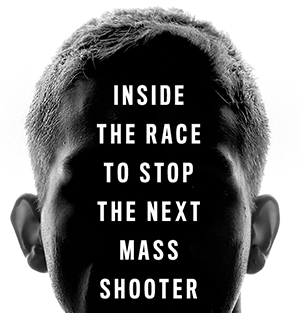
It is perhaps too easy to forget how many times this has happened. The horrific massacre at a movie theater in Aurora, Colorado, in July 2012, another at a Sikh temple in Wisconsin that August, another at a manufacturer in Minneapolis that September—and then the unthinkable nightmare at a Connecticut elementary school that December—were some of the latest in an epidemic of such gun violence over the last three-plus decades. Since 1982, there have been at least 98 public mass shootings across the country, with the killings unfolding in 34 states from Massachusetts to Hawaii. Fifty-nine of these mass shootings have occurred since 2006. Seven of them took place in 2012 alone, including Sandy Hook. An analysis of this database by researchers at Harvard University, further corroborated by a recent FBI study, determined that mass shootings have been on the rise.
We’ve gathered detailed data on more than three decades of cases and mapped them below, including information on the attackers’ profiles, the types of weapons they used, and the number of victims they injured and killed. The following analysis covers our original dataset comprised of 62 cases from 1982-2012.
Weapons: Of the 143 guns possessed by the killers, more than three quarters were obtained legally. The arsenal included dozens of assault weapons and semi-automatic handguns with high-capacity magazines. (See charts below.) Just as a perpetrator used a .40-caliber Glock to slaughter students in Red Lake, Minnesota, in 2005, so too did the one in Aurora, along with an AR-15 assault rifle, when blasting away at his victims in a darkened movie theater. In Newtown, Connecticut, the attacker wielded a .223 Bushmaster semi-automatic assault rifle as he massacred 20 school children and six adults.
The perpetrators: More than half of the cases involved school or workplace shootings (12 and 20, respectively); the other 30 cases took place in locations including shopping malls, restaurants, and religious and government buildings. Forty-four of the killers were white males. Only one was a woman. (See Goleta, Calif., in 2006.) The average age of the killers was 35, though the youngest among them was a mere 11 years old. (See Jonesboro, Ark., in 1998.) A majority were mentally troubled—and many displayed signs of mental health problems before setting out to kill. Explore the map for further details—we do not consider it to be all-inclusive, but based on the criteria we used, we believe that we’ve produced the most comprehensive rundown available on this particular type of violence. (Mass shootings represent only a sliver of America’s overall gun violence.) For the stories of the 151 shooting rampage victims of 2012, click here, and for our groundbreaking investigation into the economic costs of the nation’s gun violence, including mass shootings, click here.
Click on the dots or use the search tool in the top-right corner of the map to go to a specific location. Zoom in to find cases located geographically close together in Colorado, Texas, Wisconsin, and elsewhere. [Editor’s note: The Oct. 1, 2017 mass shooting on the Las Vegas Strip and several other recent attacks have not yet been added to this map; we will be publishing an updated version soon. In the meantime, see our fully updated database here.]
Our focus is on public mass shootings in which the motive appeared to be indiscriminate killing. We used the following criteria to identify cases:
The perpetrator took the lives of at least four people. A 2008 FBI report identifies an individual as a mass murderer—versus a spree killer or a serial killer—if he kills four or more people in a single incident (not including himself), typically in a single location. (*In 2013, the US government’s fatality baseline was revised down to three.)
The killings were carried out by a lone shooter. (Except in the case of the Columbine massacre and the Westside Middle School killings, which involved two shooters.)
The shootings occurred in a public place. (Except in the case of a party on private property in Crandon, Wisconsin, and another in Seattle, where crowds of strangers had gathered.) Crimes primarily related to gang activity or armed robbery are not included, nor are mass killings that took place in private homes (often stemming from domestic violence).
Perpetrators who died or were wounded during the attack are not included in the victim counts.
We included a handful of cases also known as “spree killings“—cases in which the killings occurred in more than one location over a short period of time, that otherwise fit the above criteria.
For more on the thinking behind our criteria, see these two explanatory pieces. Plus: more on the crucial mental illness factor, and on the recent barrage of state laws rolling back gun restrictions across the US. And: Explore the full data set behind our investigation.
Here are two charts detailing the killers’ weapons:
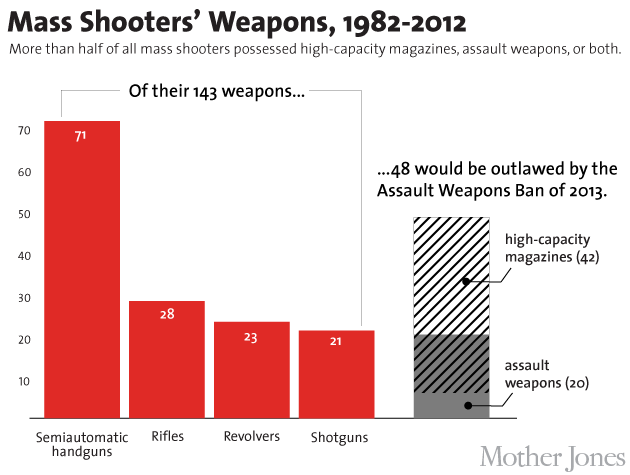
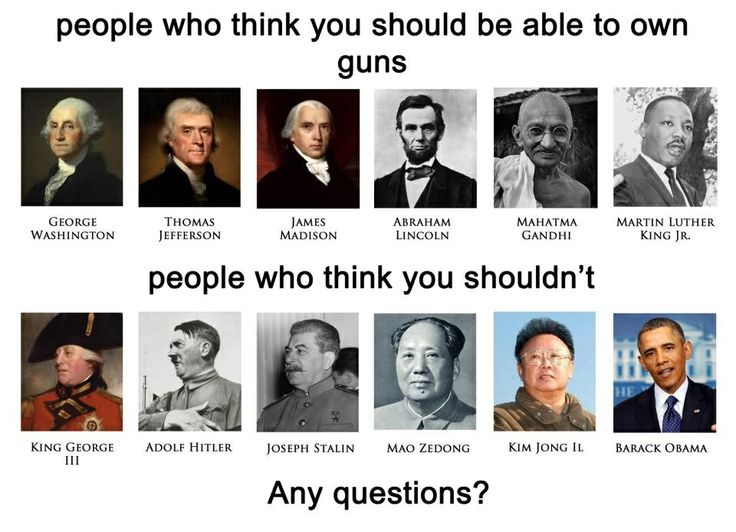 ![C5621884-A95F-4AD0-B5AA-CFBDB28EF608.png]
![C5621884-A95F-4AD0-B5AA-CFBDB28EF608.png]
(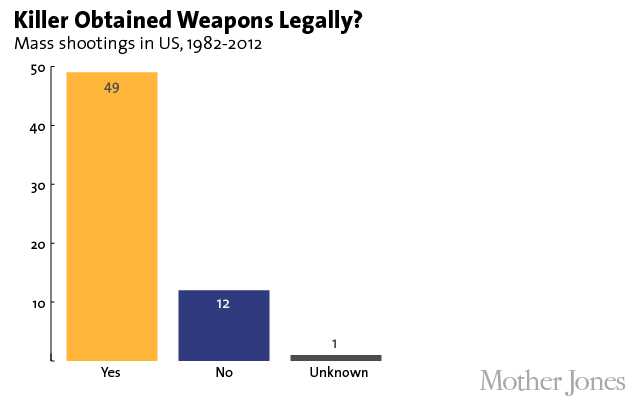 )
)
A CDC study in 2013 showed between 500,000-3million lives have been saved by “good guys with guns
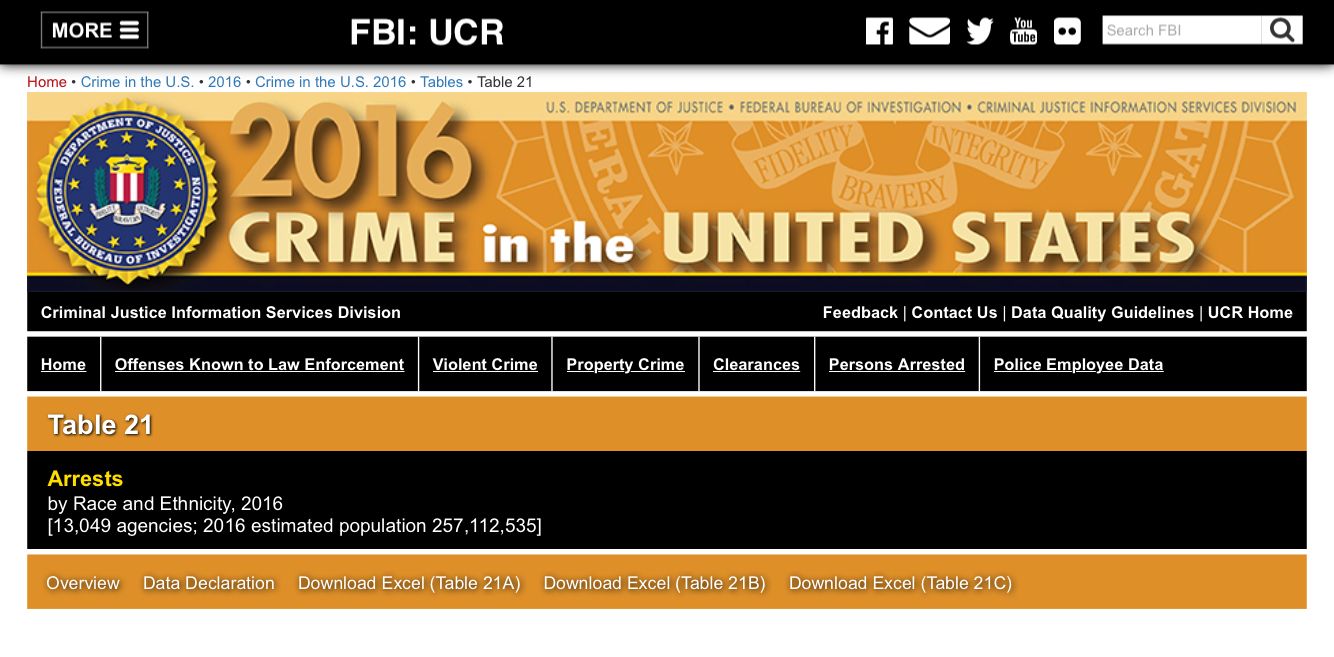
https://ucr.fbi.gov/crime-in-the-u.s/2016/crime-in-the-u.s.-2016/topic-pages/tables/table-21
Guns and race: The different worlds of black and white Americans
Richard V. Reeves and Sarah HolmesTuesday, December 15, 2015
“The nation’s consciousness has been raised by the repeated acts of police brutality against blacks. But the problem of public space violence—seen in the extraordinary distress, trauma and pain many poor inner-city families experience following the killing of a family member or close relative—also deserves our special attention.”
So argued William Julius Wilson, world-renowned scholar and newly appointed Brookings Nonresident Senior Fellow, on this blog yesterday. That special attention could usefully start with some of the most important facts. Gun deaths vary dramatically by gender and race:
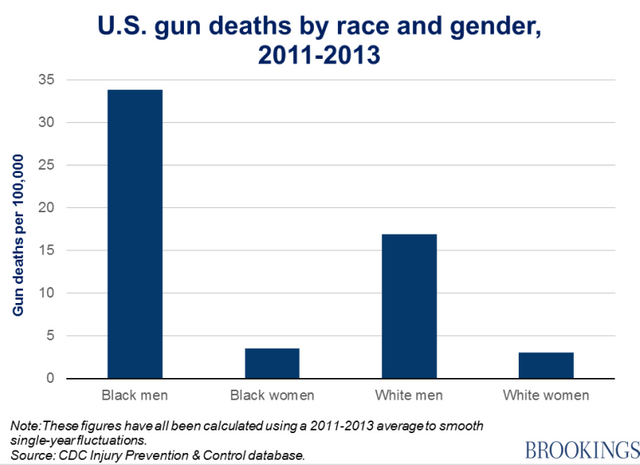
Young adult gun deaths by race and gender
The differences among young adults—those aged between 20 and 29—are even starker, according to CDC data for 2011 through 2013:
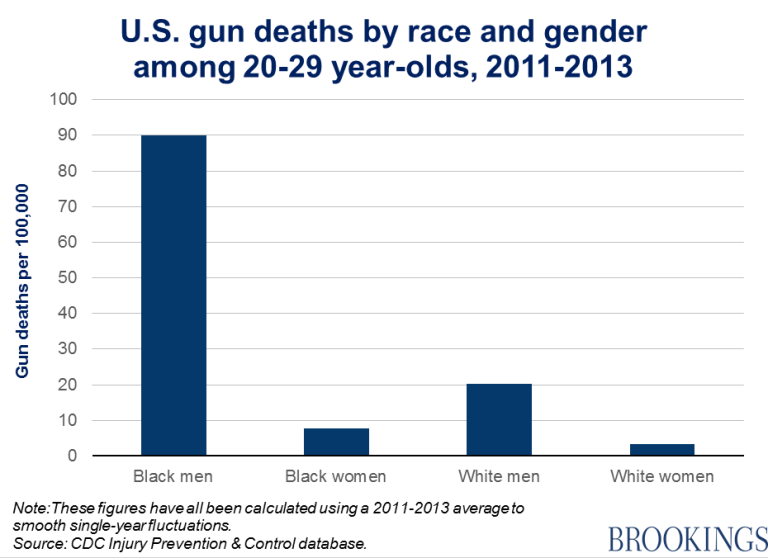
In 2013, firearm deaths accounted for over 11 percent of all years of potential life lost among the black population, but less than 6 percent of all years of potential life lost among the white population.
White suicides, black homicides
Gun deaths also vary dramatically by type. The vast majority (77 percent) of white gun deaths are suicides; less than one in five (19 percent) is a homicide. These figures are nearly opposite in the black population, where only 14 percent of gun deaths are suicides but 82 percent are homicides:
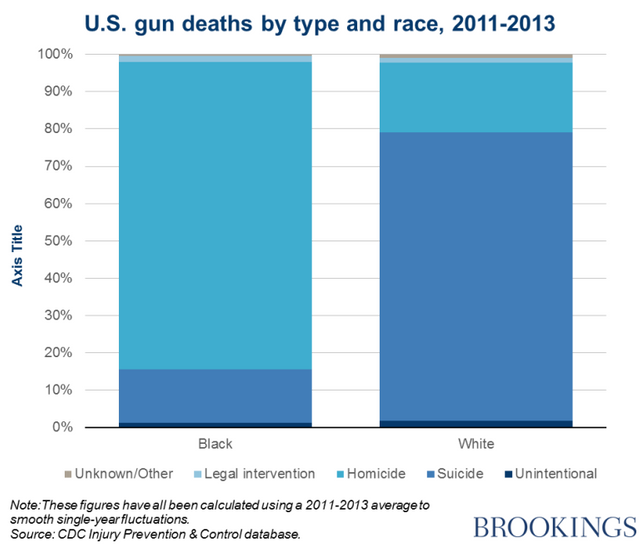
The firearm homicide rate among black men aged 20-29 is about 89 per 100,000.To put that fact in some international perspective, in Honduras—the country with the highest recorded homicide rate—there were 90.4 intentional murders per 100,000 people in 2012. That includes all means, not just firearm homicides.
‘DISTRESS, TRAUMA, AND PAIN’: SOCIAL COSTS
Gun violence can have a series of serious snowball effects in education, health, incarceration, family instability, and social capital. To take one example, anxiety levels rise and cognitive functioning worsens among school children following a violent crime within half a mile of their home, according to a study by Dana Charles McCoy, C. Cybele Raver and Patrick Sharkey. Individuals who witness violence are also at increased risk for a variety of mental health issues, which can manifest as post-traumatic stress disorder, depression, poor academic performance, substance abuse, risky sexual behavior, delinquency, and violent behavior, notes David Hemenway. And as Wilson suggests, these costs weigh largely on the shoulders of black Americans.
Gun violence is part of a vicious cycle of race and inequality in the U.S., reflecting existing social inequalities, and also making it even more challenging for young black people, especially young black men, to escape poverty and violence.
Australia crime rates after the Gun Grab